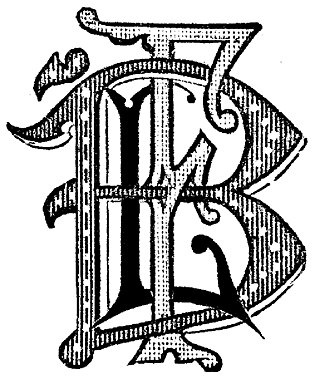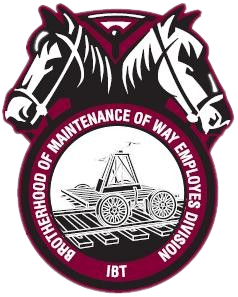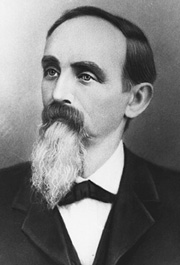
The United Transportation Union (UTU) was a broad-based, transportation labor union that represented about 70,000 active and retired railroad, bus, mass transit, and airline workers in the United States. The UTU was headquartered in Cleveland, Ohio. On August 11, 2014, it merged with the Sheet Metal Workers' International Association (SMWIA) to form the International Association of Sheet Metal, Air, Rail and Transportation Workers, known by the acronym SMART.

Alvanley Johnston was a Canadian / American locomotive engineer who became head of the Brotherhood of Locomotive Engineers (BLE), a union that covered the United States and Canada, holding the title of Grand Chief Engineer from 1925 to 1950. During his tenure the Brotherhood recovered from financial problems, weathered the Great Depression and World War II, and held out for shorter hours and higher wages in a nationwide strike in 1946.

The Brotherhood of Locomotive Firemen and Enginemen was a North American railroad fraternal benefit society and trade union in the 19th and 20th centuries. The organization began in 1873 as the Brotherhood of Locomotive Firemen, a mutual benefit society for workers employed as firemen for steam locomotives, before expanding its name in 1907 in acknowledgement that many of its members had been promoted to the job of railroad engineer. Gradually taking on the functions of a trade union over time, in 1969 the B of LF&E merged with three other railway labor organizations to form the United Transportation Union.

The Iowa, Chicago and Eastern Railroad (IC&E) was a Class II railroad operating in the north central United States. It has been controlled by the Canadian Pacific Railway and operated as a part of its system since October 30, 2008. Formerly, the IC&E was jointly owned with the Dakota, Minnesota and Eastern Railroad by Cedar American Rail Holdings (CARH), making the combined system the largest class II railroad in the United States. Created by the purchase of I&M Rail Link, IC&E commenced operations on July 30, 2002. The 1,400-mile (2,300 km) line, based in Davenport, Iowa, serves the states of Illinois, Iowa, Missouri, Minnesota and Wisconsin. Principal commodities include chemicals, coal, steel, automobiles, and agricultural products. Train dispatching is performed at a joint DM&E/IC&E facility in Sioux Falls, South Dakota. On December 26, 2008, the IC&E was merged into parent CARH, which immediately merged into the DM&E.
The railroad brotherhoods are labor unions of railroad workers in the United States. They first appeared in 1863 and they are still active. Until recent years they were largely independent of each other and of the American Federation of Labor.

The Brotherhood of Maintenance of Way Employes (BMWE) – later to become the Brotherhood of Maintenance of Way Employes Division of the International Brotherhood of Teamsters (BMWED) – is a national union representing the workers who build and maintain the tracks, bridges, buildings and other structures on the railroads of the United States.
Union Pacific Railroad v. Brotherhood of Locomotive Engineers, 558 U.S. 67 (2009), was a United States Supreme Court decision on labor disputes.

The Brotherhood of Railroad Trainmen (BRT) was a labor organization for railroad employees founded in 1883. Originally called the Brotherhood of Railroad Brakemen, its purpose was to negotiate contracts with railroad management and to provide insurance for members.

The Switchmen's Union of North America (SUNA) was a labor union formed in October 1894 that represented the track switch operators and people who coupled railway cars in railway yards in the United States and Canada. It became part of the United Transportation Union in 1969.

Warren Stanford Stone was a railway worker who rose to head the Brotherhood of Locomotive Engineers in the United States from 1903 to 1925. He was unusual as a labor leader in that he did not believe in compulsory union membership and was comfortable with "labor capitalism". He supported a radical plan in which workers in an industry would take one-third of the profits, the other thirds going to capital and the public. By the end of his tenure the Brotherhood controlled investments worth over $100 million.

William D. Robinson was a locomotive engineer who founded the Brotherhood of Locomotive Engineers (BLE) on 8 May 1863 during the American Civil War, America's first union for railway workers. Robinson traveled widely and oversaw rapid growth in the union's first sixteen months. After a disastrous strike he was forced to resign in August 1864, and did not hold office again, although he remained active in union affairs until his death.

Peter M. Arthur was a Scottish immigrant to the United States who was leader of the Brotherhood of Locomotive Engineers (BLE) for many years. He led his union in a major ten-month strike against the CB&Q Railroad in 1888, and lost badly.

Alexander F. Whitney was an American railway worker who became president of the Brotherhood of Railroad Trainmen (BRT). He was an influential labor leader during the Great Depression and World War II, and in the years immediately following the war. He was the principal leader of a two-day railroad strike in May 1946 that paralyzed the nation.

William Parker Kennedy was president of the Brotherhood of Railroad Trainmen (BRT) from 1949 to 1962.

John Frederick Sytsma was President of the Brotherhood of Locomotive Engineers (BLE) from 1976 to 1986.
Don Hahs was President of the Brotherhood of Locomotive Engineers and Trainmen (BLET), a railway workers' union in the United States.
Edward W. Rodzwicz was President of the Brotherhood of Locomotive Engineers and Trainmen (BLET), a railway workers' union in the United States.
Ronald Paul McLaughlin was an American railway engineer and labor leader who was the President of the Brotherhood of Locomotive Engineers (BLE), a railway workers' union in the United States, from 1991 to 1996.
The International Association of Sheet Metal, Air, Rail, and Transportation Workers (SMART) is a North American labor union headquartered in Washington, DC, which was chartered by the AFL–CIO in 2013. The product of a merger between the Sheet Metal Workers’ International Association (SMWIA) and the United Transportation Union (UTU), SMART represents over 210,000 sheet metal workers, service technicians, bus operators, engineers, conductors, sign workers, welders, and production employees, among others, throughout the United States, Puerto Rico, and Canada. The Transportation Division represents employees on Class I railroad, Amtrak, and regional and short line railroads; bus and mass transit employees on some 45 transit systems; and airline pilots, flight attendants, dispatchers and other airport personnel. The Division's 500 local unions organize conductors, brakemen, switch men, ground service personnel, locomotive engineers, hostlers, and railroad yard masters, as well as bus drivers and mechanics.
















